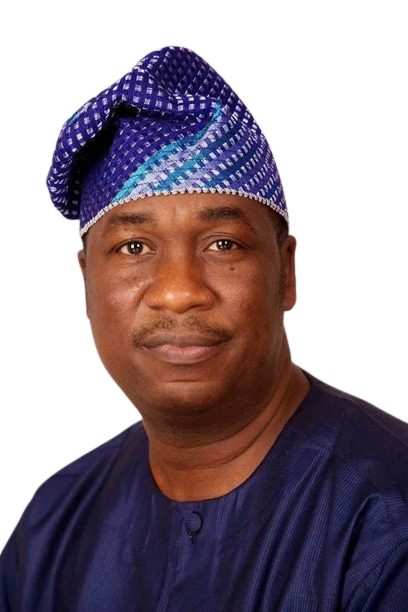LAGOS State Deputy Governor, Dr Obafemi Hamzat, has advanced reasons why construction work on the 38-kilometre Fourth Mainland Bridge has not commenced.
Speaking during an interview on Arise TV’s The Morning Show on Tuesday, the state’s number two citizen outlined that significant preparatory work has been completed, noting that all necessary paperwork was in place.
“We’ve done everything. Paperwork. We’ve done all the paperwork,” he confirmed.
The bridge project envisioned as a Public-Private Partnership (PPP), attracted interest from 18 companies, with China Civil Engineering Construction Corporation (CCECC) emerging as the preferred bidder.
However, Hamzat highlighted a critical stumbling block: the project’s exorbitant cost.
“The challenge is that the cost is outrageous. It’s just a bit too high,” he explained, stressing the financial prudence required in light of the current economic conditions.
The state government, according to the deputy governor, faces a crucial decision about whether to proceed with the bridge project now or prioritise other ongoing infrastructure developments, such as the Blue and Red rail lines and water transportation systems.
The construction of the bridge, initially slated for 2017 with a projected completion date in 2019, faced several delays, with a budget that once stood at approximately N844 billion.
The latest plans, announced in December 2022, placed the CCECC-CRCCIG Consortium as the lead contractor for the project, estimated to cost about $2.5 billion. The project is expected to be completed by 2027, subject to the resolution of financial constraints.
The deputy governor stressed the need for a thorough evaluation of all available data within the next two to three months to determine the best course of action. He noted that the state is cautious about increasing its debt burden, especially given the volatile exchange rate of the Naira.
The Lagos State government has been exploring various funding models to make the Fourth Mainland Bridge a reality. A significant partnership was secured with the African Export-Import Bank and Access Bank, totalling $1.352 billion, aimed at supporting long-term infrastructure projects, including the Fourth Mainland Bridge and the second phase of the Lagos Rail Mass Transit (LRMT) Blue Line from Mile 2 to Okokomaiko.
Despite this partnership, the government is cautious about increasing its debt burden, especially given the current exchange rate challenges facing the Naira.
“It involves us actually taking a lot of loans. So, is it the right decision given the rate of Naira now? Those are decisions we have to make,” he stated.
The government is strategically assessing the immediate and long-term benefits of the Fourth Mainland Bridge against other critical infrastructure projects. Governor Sanwo-Olu has emphasized the importance of the bridge in alleviating traffic congestion and fostering economic growth by linking key areas of Lagos. However, the administration also recognises the need to balance this with the completion of other vital projects that are already underway.
The Blue Line rail project, for instance, recently began passenger operations, and plans are in place to extend it from Mile 2 to Okokomaiko. This extension, along with the ongoing development of the Red Line, is expected to significantly enhance the city’s transportation network, serving over one and a half million commuters daily.
The Lagos State government says it remains committed to the Fourth Mainland Bridge project. Governor Sanwo-Olu reiterated his administration’s dedication during various public addresses, promising that the bridge will not only connect different parts of Lagos but also catalyse economic development across the state.
The project, upon completion, will feature three toll plazas, nine interchanges, a 4.5-kilometer Lagoon Bridge, and an eco-friendly environment, making it the second-longest bridge in Africa.
While the Fourth Mainland Bridge project faces significant financial and logistical challenges, the Lagos State government says it is actively exploring solutions to move forward.
The project’s importance to the state’s infrastructure and economic landscape cannot be overemphasized, and the government is committed to making the necessary decisions to bring it to fruition, albeit with a careful consideration of the current economic climate and other ongoing projects.
Meanwhile, with the latest position of the Lagos State government on the state of the Fourth Mainland Bridge, it becomes easy to infer that there is no date in sight for the commencement of construction of the bridge.
Key Facts About the Fourth Mainland Bridge
- The Fourth Mainland Bridge is a 38 km-long project connecting Lagos Island to Ikorodu.
- It is designed as a 2 x 4 lane carriageway with provisions for BRT and future road expansions.
- The project was initially planned for 2017, with an estimated cost of N844 billion.
- The bridge’s construction will be the first major bridge project in Lagos since the Third Mainland Bridge, completed in 1990.
- CCECC-CRCCIG Consortium was announced as the preferred bidder in December 2022.
- The bridge is estimated to cost about $2.5 billion and will be delivered through a public-private partnership.
- It is now projected to be completed in 2027.
- The bridge will align with major roads, including the Lagos-Ibadan Expressway.
- It will complement existing bridges and help reduce traffic congestion.
- Upon completion, it will be the second-longest bridge in Africa, featuring three toll plazas, nine interchanges, and an eco-friendly design
Eighteen-Eleven Media


